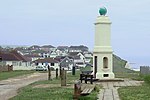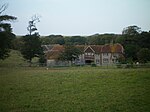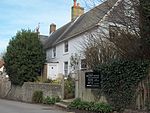Peacehaven Community School
Peacehaven Community School is a mixed secondary school for 11 to 16-year-olds in Peacehaven, East Sussex in the United Kingdom. The school was opened in 2001 following a 40-year campaign by the local community for a secondary school in Peacehaven.It is an Academy administered and governed by the Swale Academies Trust, a status it gained in September 2019. The current Head of School was Darren Warner-Swan with Liza Leung as Executive Headteacher on behalf of the Trust.Previously, it was a foundation school administered by East Sussex County Council and the Peacehaven Co-operative Learning Trust. With governance of the school being undertaken by an Interim Executive Board between 2013 until 2018.
Excerpt from the Wikipedia article Peacehaven Community School (License: CC BY-SA 3.0, Authors).Peacehaven Community School
Greenwich Way,
Geographical coordinates (GPS) Address Phone number Website External links Nearby Places Show on map
Geographical coordinates (GPS)
| Latitude | Longitude |
|---|---|
| N 50.79611 ° | E 0.00304 ° |
Address
Peacehaven Community School
Greenwich Way
BN10 8RB , Peacehaven
England, United Kingdom
Open on Google Maps








